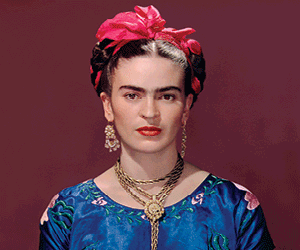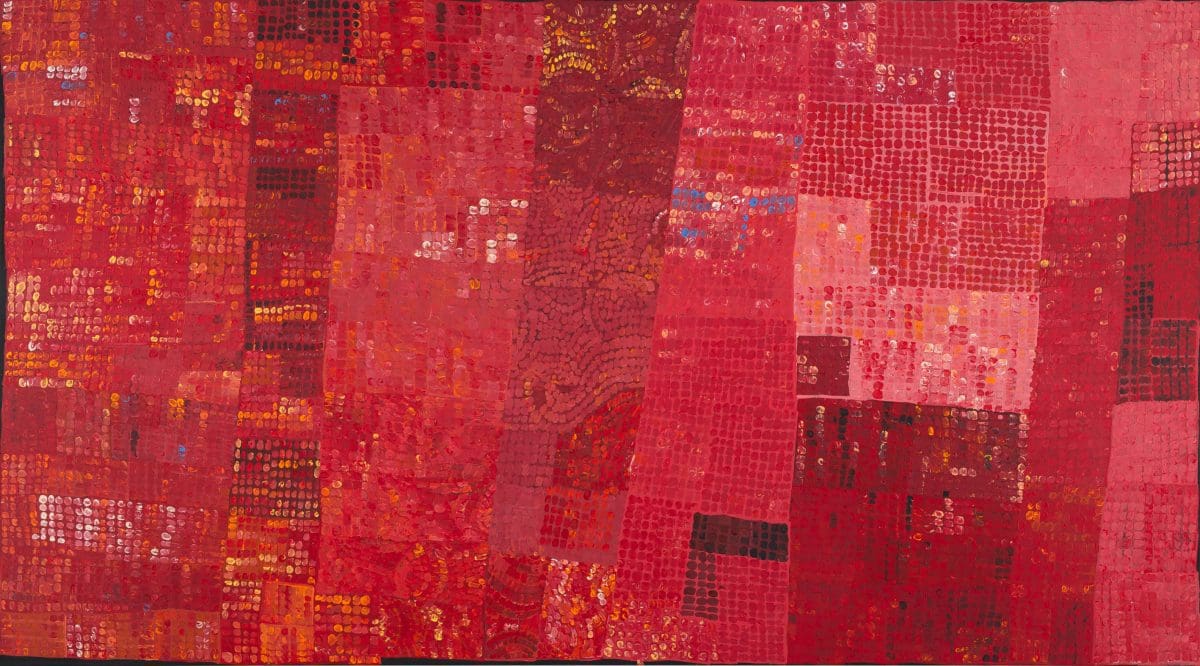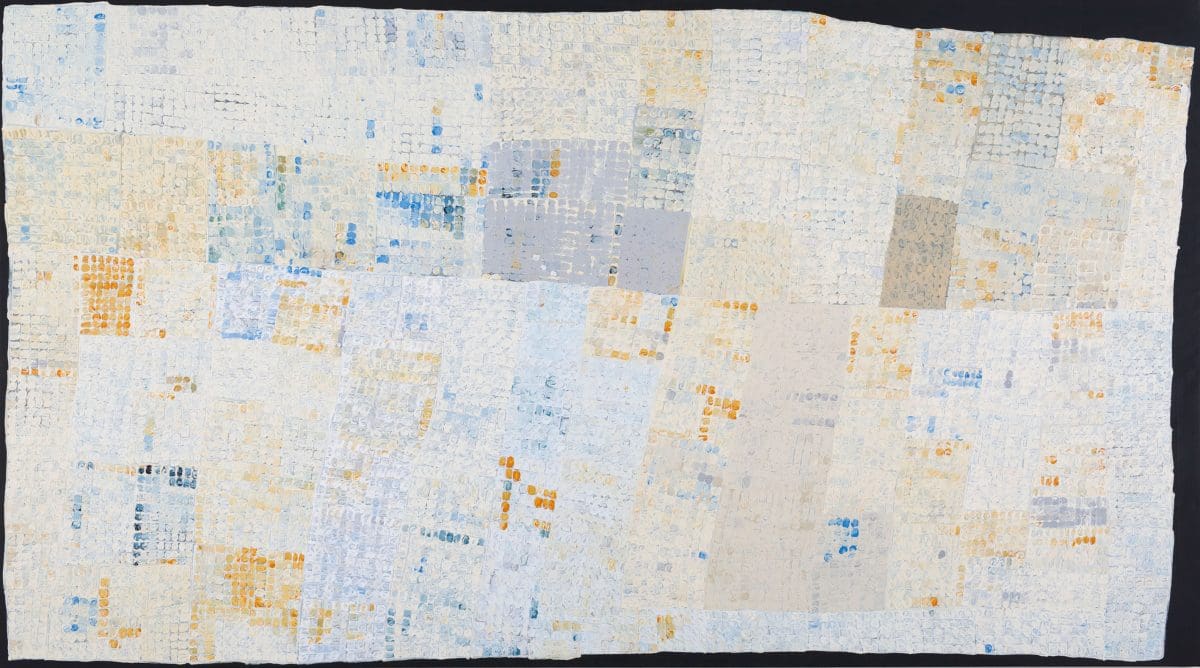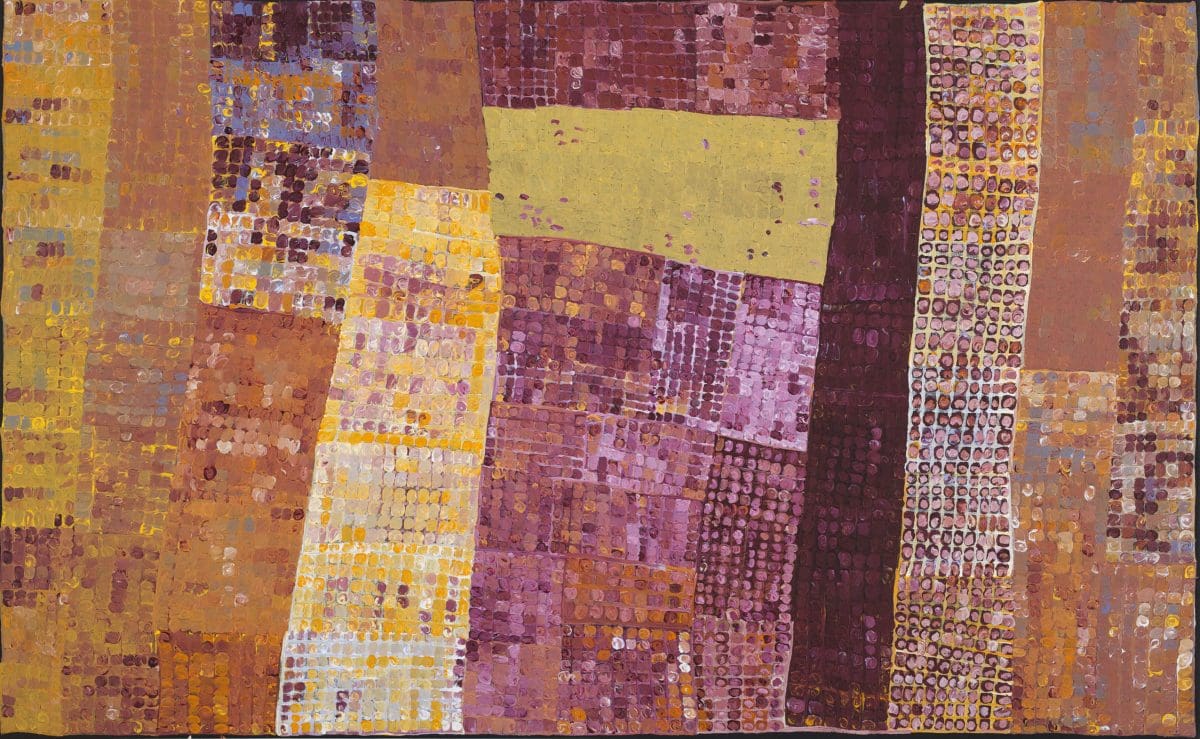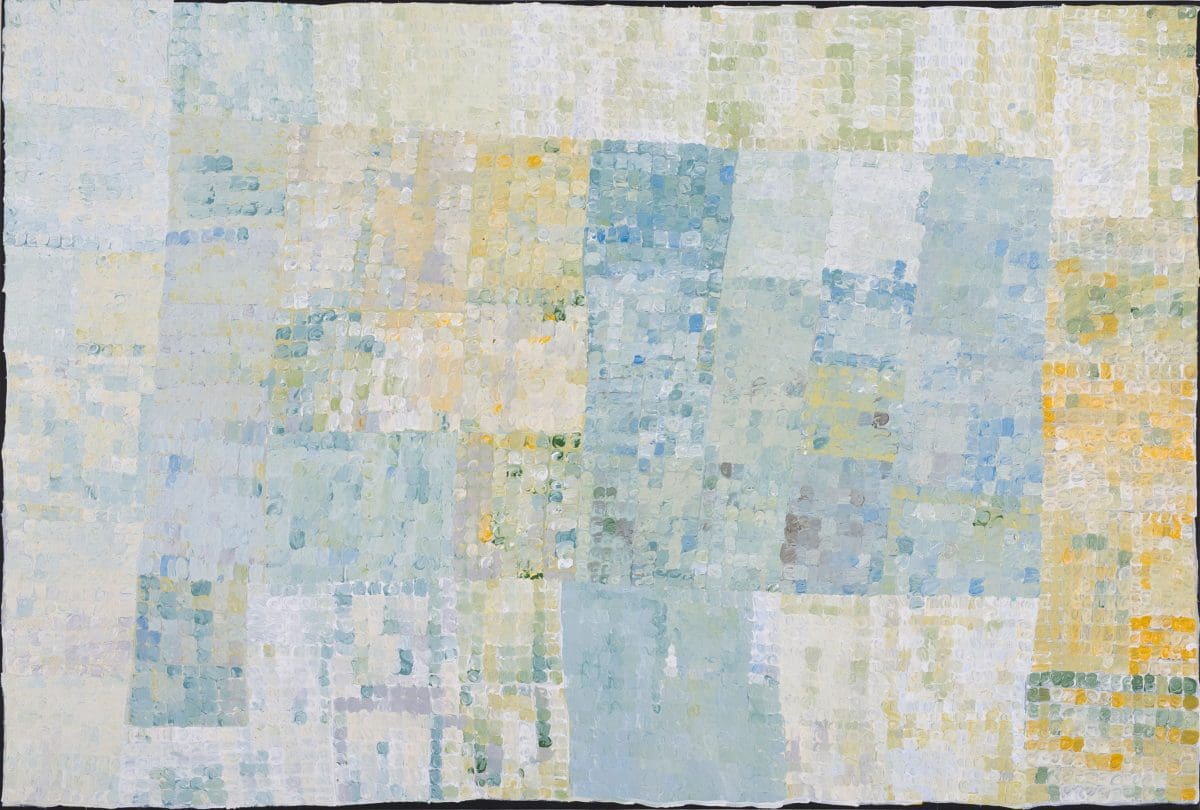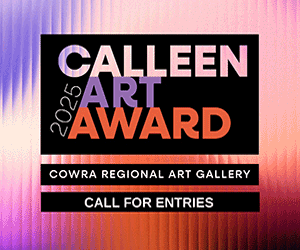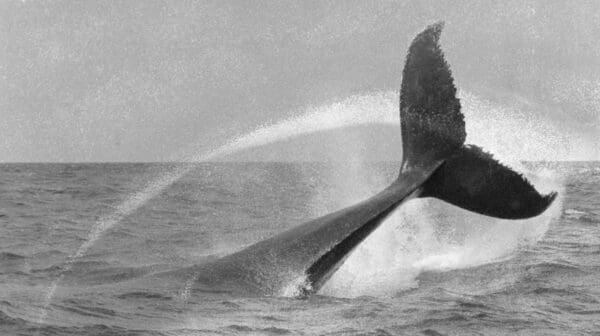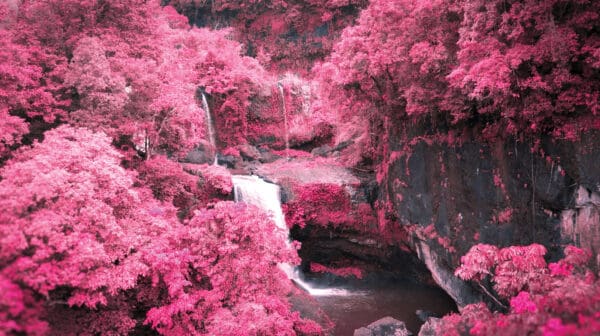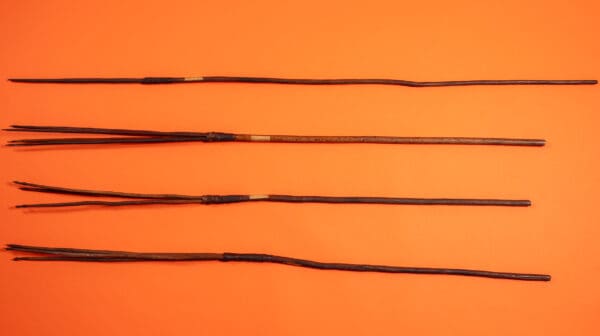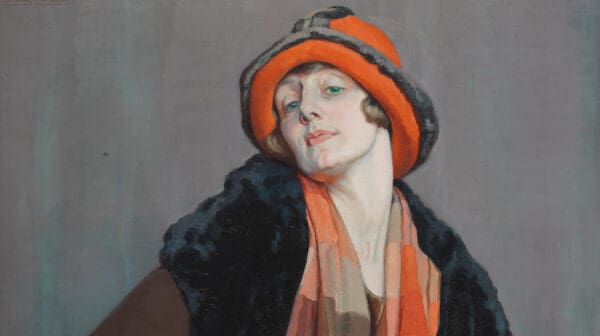Carbiene McDonald Tjangala introduces himself while seated to the right of an aqua-blue building beneath one of two front windows. McDonald, born in 1961, then shares a detail still astonishing to many: “I started painting in the year 2018.” He then complicates this by saying that he also “used to draw on the ground”, revealing how being an artist is never a linear trajectory. These moments of McDonald speaking about his relationship with painting come from a short film about the artist, released by Papunya Tjupi Arts in 2020.
Papunya Tjupi Arts is an Aboriginal owned not-for-profit community art centre based in Papunya—located approximately 240 kilometres northwest of Mparntwe (Alice Springs). It’s also where McDonald first began painting. “All the young fellas were encouraging me to paint,” explains McDonald. “Now I’m painting, I’ve started working.”
With great movement in his practice, McDonald is committed to painting the four Tjukurrpa (Dreaming) stories inherited from his father Snowy McDonald. And this commitment is undeniable: “He’s the first one to arrive at the Papunya Tjupi and then last one to leave each day,” says Dallas Gold, director of RAFT artspace.
It was documentation of McDonald’s earlier work on Papunya Tjupi Arts’s Instagram that grasped the attention of many—including Gold—propelling McDonald’s first solo exhibition at RAFT artspace in 2018. It was a sell-out show. “There’s an inherited visual language in [McDonald’s] work but he’s also inventing a visual language,” explains Gold. “He’s inventing a language that alludes to something that he’s inherited without giving too much away.”
While McDonald’s new work at RAFT still has his signature iterative layers of paint and square formations, it also yields subtle yet meaningful shifts with colour and composition. Gold explains that McDonald is undoubtedly becoming more playful and dynamic within the structures of his work. The paintings demonstrate “strong statements informed by knowledge of Country and about Country—but they’re also inventing a language to allude to these knowledge systems, or they’re trying to reestablish this—so this is something that’s very new,” says Gold. As McDonald has explained, “I only paint my Country. I felt I had to paint this way, paint my homelands…in the future I’m going to keep making artworks of my Country.”
In 2019—a little over a year after McDonald began painting—he was awarded the Hadley’s Art Prize for landscape painting. McDonald’s award-winning work, Four Dreamings, was a densely layered painting depicting a sequence of waterholes running between Docker River and Kata Tjuta. McDonald’s inherited Tjukurrpa (Dreaming) specifically relates to four significant sites: Petermann Ranges, Docker River, Kalaya Murrpu (Blood’s Range) and Mulyayti near Kata Tjuta.
One of the Hadley’s Art Prize judges, Susan McCulloch OAM, explained that the “intensity of light in the work is mirage-like—it is blinding and mesmerising. The surface textures are at once subtle and incredibly powerful in a way that’s beyond translation into any digital reproduction.” McDonald winning this prize was more than validation—it was his own prediction. He “told everyone he was going to win a big prize. And he went and did it,” says Gold.
Carbiene McDonald Tjangala
RAFT artspace
29 April—21 May


